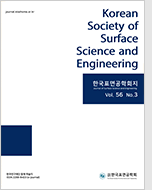
- Past Issues
- e-Submission
-

2021 Impact Factor 1.766
5-Year Impact Factor 1.674
Editorial Office
- +82-2-563-0935
- +82-2-558-2230
- submission@kssse.or.kr
- https://www.kssse.or.kr/

2021 Impact Factor 1.766
5-Year Impact Factor 1.674
The Korean Society of Surface Science and Engineering 2023;56(6):371-379. Published online: Dec, 28, 2023
DOI : 10.5695/JSSE.2023.56.6.371
Ammonia, which is closely related to our lives, has a significant impact on our lives as a representative substance for crop cultivation. Recently, it has gained attention as an efficient and productive hydrogen/storing substance that can replace fossil fuels. Efforts are being made to utilize it as a renewable energy source through thermochemical and electrochemical reactions. However, the use of ammonia, which encompasses the era, carries inherent toxicity, so a comprehensive understanding of ammonia safety is necessary. To ensure safety in the transportation and storage of ammonia and chemical substances domestically and internationally, national and organizational standards are being developed and provided through documents and simple symbols to help people understand. This review explores the chemical characteristics of ammonia, its impact on human health, and the global trends in safety standards related to ammonia. Through this examination, the paper aims to contribute to the discourse on the safety and risk management of ammonia transport and storage, crucial for achieving carbon neutrality and expanding the hydrogen economy.
Keywords Ammonia; Ammonia Certification; Hydrogen Storage; Safety; Risk assessment